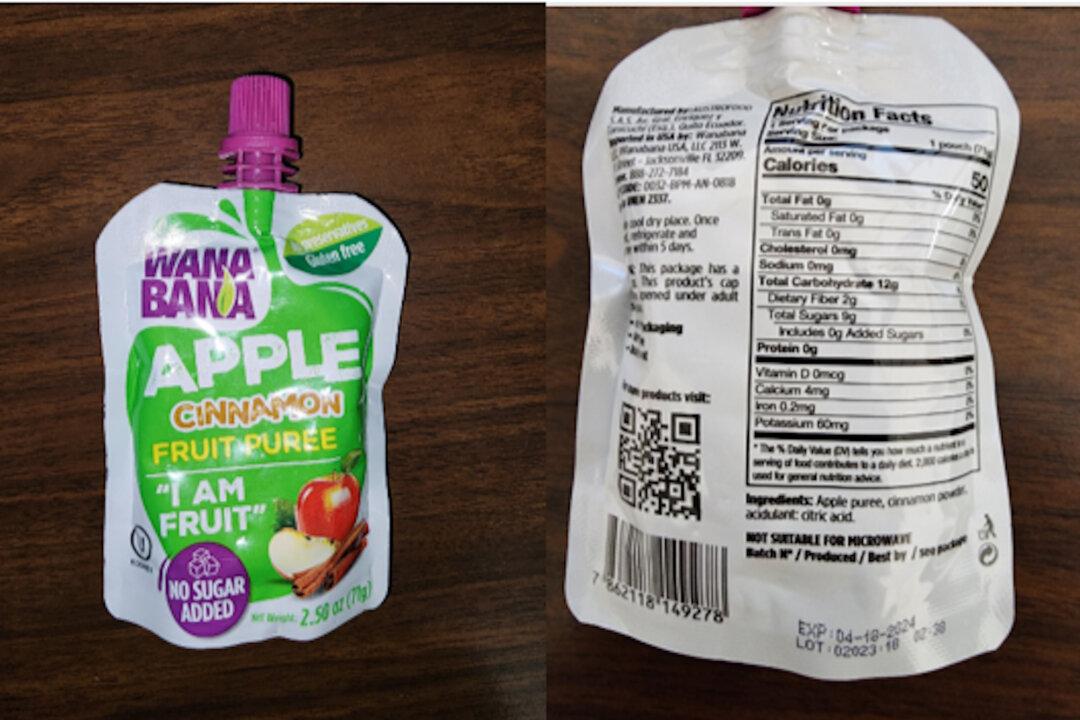The U.S. Food and Drug Administration (FDA) has issued an alert to parents, warning them not to buy a brand of fruit puree pouches for children after the snacks were found to have high levels of lead, while recommending youngsters who did consume the potentially contaminated fruit puree to get their blood tested for toxicity.
The FDA said that lead was found in WanaBana apple cinnamon fruit puree pouches, which are sold across the country at various retailers, including Amazon, Dollar Tree, and Sam’s Club.





